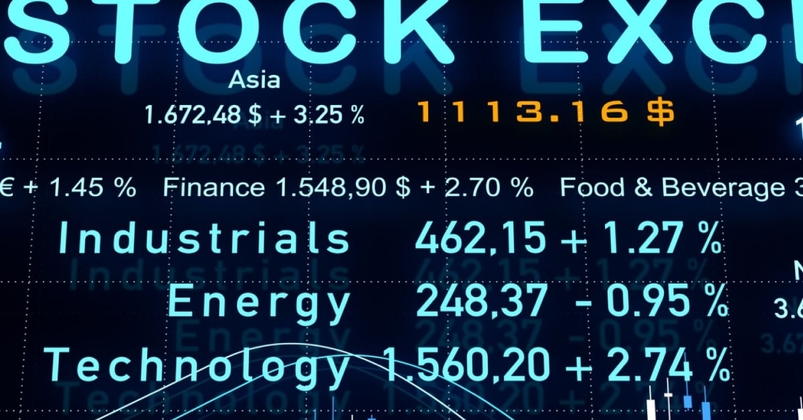Learn to trade
What are macroeconomics? And why are they important?
Macroeconomics is the big-picture view of global finance. Economies and markets aren’t static, they move and change on multiple levels. ‘Macro trends’ are shifts that are on the largest scale: international economics and their rhythms. They affect the finances of nations, as well as having a trickle-down effect on the person in the street. So, macroeconomics is the side of economics that deals with large-scale economic factors on a national or global level.
Examples of macro trends in a market
Just like in individual trading, there are many different ‘time frames’ that a macro trend can have. Some last a few months (known as cyclical trends), while others can last decades (known as secular trends).
Here are some examples of macro trends that have been observed in our financial markets in the past several years:
- Medium-term: Changes in interest rates
- Medium-term: Changes in inflation
- Medium-term: Cyclical macro trends such as economic growth and expansion, or economic contraction (especially recession)
- Medium-term: Changes in national or international employment rates
- Long-term: Changes in international or national demographics (e.g. an ageing population)
- Long-term: Widespread bullishness on a new, disruptive technology (e.g. AI or machine learning)
- Long-term: mass urbanisation or de-urbanisation of economically significant areas
How interest rates affect macroeconomics
As we can see, interest rates changing (i.e. the rates market) is only one example of macro trends - but it’s a significant one. Because changes in the interest rate directly affects how much cash, savings and other interest-accruing assets are worth, it has a ripple-effect on the whole economy.
When a country’s central bank raises interest rates, cash and interest on loans is typically worth more. But often bonds, which have prices that move inversely to yield, are often consequently worth less. Higher interest makes some markets perform worse, while others perform better - and traders often pivot their attention away from certain assets and towards others as a result.
Banks and businesses are affected by the effects of more expensive interest too, and it often heralds a time of less spending, which can cause economies to contract.
The opposite is also true. Lower interest rates usually mean more consumer demands and spending, plus a renewed focus on asset classes that aren’t directly linked to high interest rates (like bonds, real estate and bank share CFDs). However, while it may mean less pressure on consumers’ wallets, it also means things like savings - which are dependent on interest accumulation to appreciate - are worth less.
Different markets that are affected by a change in interest rates
- Cash: As interest rates rise, cash is worth more, often making it more attractive as an asset class (for example, cash stored in a savings account is worth more when interest rates are higher). However, rising interest rates are very often preceded by a rise in inflation, which does mean cash has less purchasing power than before.
- Bonds: Bonds are financial instruments that accrue interest, which is the principle way the bond’s investor makes profit and is repaid for their investment. Their yields tend to show a negative correlation to the interest rate typically. So, as interest rates rise, bonds tend to perform worse. As a result, less investors and traders typically will focus on bonds when interest rates rise.
- Share CFDs/equities: When interest rates are higher, businesses typically focus on spending less, and less big projects which would require loans. As a result, often share CFD prices drop in value when rates are hiked. The share CFDs market also often trends downwards in hawkish times because the higher rates can negatively affect their valuations.
- Forex: Because interest rate has a material impact on how much a currency is worth, changes in the rates market often has a material impact on how different currencies are valued against each other. Often, changes in countries’ interest rates will affect which forex pairs receive more attention from traders, and which ones get less. Typically, currencies with higher interest rates will strengthen and as a result often see more activity, while currencies with lower interest rates will weaken and receive less interest.
- Commodities: Higher interest rates may have a negative effect on some commodities , as the aggregate demand for them wanes in the face of higher shipping costs (made more expensive by the higher interest rates) and more conservative industrial sectors. That being said, different commodities react differently. For example, high interest rates coupled with high inflation are often the result of an uncertain economic climate. And so-called safe-haven commodities like gold tend to do well in these.
Factors influencing macro trends in the rates market
There are a number of elements that drive changes in interest rates and, as a result, change the macro landscape in financial markets. Some of these are:
- General economic indicators: The most direct way macroeconomic trends affect interest rates is by rates being changed by countries as a direct result of economic data. When there’s positive growth, higher inflation rates may occur, prompting central banks to increase interest rates as a measure to curb rising prices.
- Large geopolitical events like war or other unrest: These tend to cause both uncertainty and inflation, which often results in central banks raising interest rates to prevent runaway inflation. A classic example of this is the 2021 and 2022 interest rate hikes, which were largely a result of the nonexistent interest rates during the Covid-19 pandemic.
- Central banks’ and fiscal policies or regulation: Central bank policies and fiscal policies of a nation also come into play, and how aggressively hawkish or dovish a country is with interest rate hikes. This may be determined by that nation’s perspective on its interest rates and how they’d affect economic growth. An example of this is the recent aggressive 2022 and 2023 Federal Reserve hikes in the United States, and similarly the Bank of England hikes in the United Kingdom.
How to trade on macro trends: trend forecasting
Macro trends are just trends on a much larger scale, and how to trade them successfully remains the same: correctly spot a trend and its direction in time to take advantage of the market sentiment and momentum, making a profit from riding it. The second half of the equation is just as important: correctly determine when the macro trend is waning and exit your positions banking on that trend before you make a loss.
However, due to the sheer size and length of macro trends, this can be far from simple. So, how do people trade on macro trends, in the interest rates space or anywhere else?
- Trend analysis
Trend analysis is the name for using technical analysis methods in the hopes of determining current or upcoming trends in your chosen market. A number of technical indicators can be used for this, such as the RSI, MACD and ADX indicators to name a few.
- Market research and industry reports
Once you have some knowledge of trend analysis yourself, you can add to this by staying up to date with market reports and latest data on ongoing and potential future macro trends. Examples of this would be real GDP growth figures as they're released, or demographic trends and consumer data across various countries and industry-specific reports relevant to your chosen market, all of which can reveal common trends and themes in the current economic climate.
- Data analytics platforms and tools
Because 'trends' can be an ephemeral term, there are also several tech offerings that aim to quantify macro trends using real-time market data and advanced analytics capabilities - a bit like the technical indicators on a trading platform, but designed to specifically provide insight into market trends. Some use straight-up data analytics to garner insight, while others use machine learning and Artificial Intelligence as well.
How to trade on interest rates with Pepperstone
With us, you can trade on changes in interest rates, and other macro trends, using hundreds of different financial instruments over various platforms. These include trading on currency pairs using forex, indices like the Nasdaq and currency indices too, commodities.
You can also open a ‘carry trade’, a specific type of position used by macro trend traders which entails opening a position, borrowing from your broker to do so, at a lower interest rate, then holding that trade open for a longer period of time until a higher-yielding rate comes in. Carry trades are usually used for forex positions, but can also apply to other markets.
Here's how to trade step by step:
- Open a demo account with Pepperstone to practise and finetune your trading strategy
- Create a live account and fund it to start trading
- Study your chosen market carefully, with regard to macro trends but also day-to-day movements
- Open your first live trade on the platform
- CFDs are complex instruments, so consider setting up stop loss and take profit orders to maximise your risk management
- Monitor the financial markets and close your trade when ready
Expert advice on macroeconomic rates trends
 | Want to find out more? Discover how to trade on inflation like a macro trend expert with market analyst Chris Weston, Pepperstone’s Head of Research. |
Also, keep up to date with the latest macro happenings in our market analysis news.
Conclusion: The TL;DR
- Macroeconomics and macro trends are crucial for understanding global finance and the big picture in trading.
- Changes in interest rates are significant macro trends with far-reaching effects on various financial markets.
- Traders can capitalise on macro trends by analysing expert forecasts, market research, and utilising data analytics tools.
- Interest rate fluctuations impact cash, bonds, equities, forex, and commodities markets differently.
- By understanding and speculating on macro trends, traders can make informed decisions and navigate the dynamic financial landscape successfully.
FAQs
What is the definition of a macro trend? And what have they got to do with interest rates?
A macro trend is a large-scale economic trend which has an international scope, or at the very least affects an entire country, and takes place over the space of months or even years. In other words, it's a large-scale, 'supersized' market trend.
Significant changes in interest rates, either globally or in a macroeconomically influential country, is a type of a macro trend.
How do changes in interest rates affect the markets on a macro level?
Changes in the rates market has a direct effect on a nation's economic growth and the expansion or contraction of their finances. It also has a domino effect of all sorts of various asset classes, including the share CFDs market, foreign exchange of currencies, the bonds market, commodities and more as we’ve highlighted above in the article - but may have more far-reaching and unpredictable consequences than even those.
Related articles
The material provided here has not been prepared in accordance with legal requirements designed to promote the independence of investment research and as such is considered to be a marketing communication. Whilst it is not subject to any prohibition on dealing ahead of the dissemination of investment research we will not seek to take any advantage before providing it to our clients.
Pepperstone doesn’t represent that the material provided here is accurate, current or complete, and therefore shouldn’t be relied upon as such. The information, whether from a third party or not, isn’t to be considered as a recommendation; or an offer to buy or sell; or the solicitation of an offer to buy or sell any security, financial product or instrument; or to participate in any particular trading strategy. It does not take into account readers’ financial situation or investment objectives. We advise any readers of this content to seek their own advice. Without the approval of Pepperstone, reproduction or redistribution of this information isn’t permitted.


